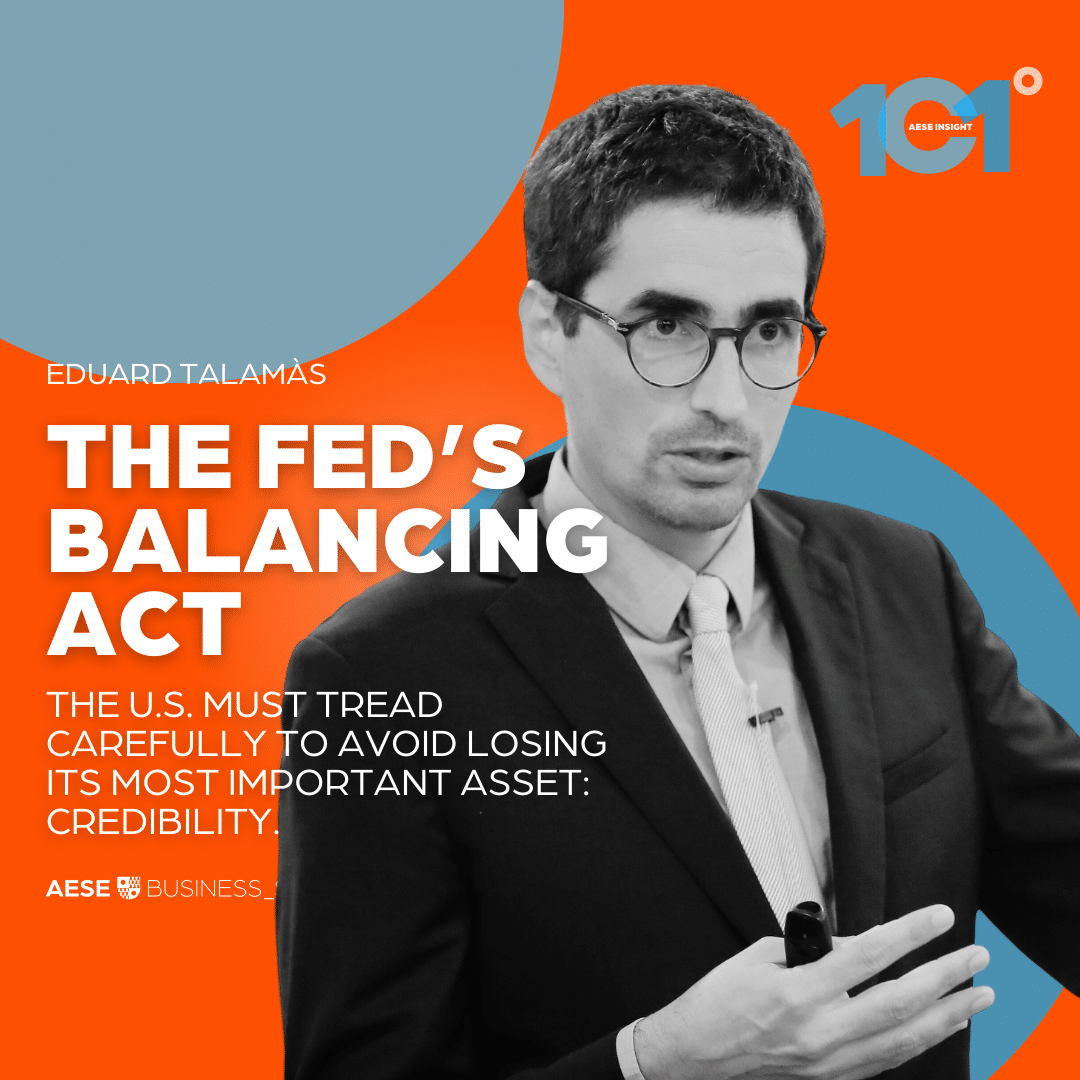The U.S. must tread carefully to avoid losing its most important asset: credibility.
This week, the policymaking body of the Federal Reserve (the Fed) met in Washington, D.C., to discuss whether to raise one of the most important and closely watched prices in the world: the federal funds rate. (This is the interest rate at which U.S. commercial banks borrow and lend their excess reserves to each other overnight, and it affects the cost of borrowing worldwide.) Ultimately, the Fed decided to keep its target interest rate at around 5.5% — a 22-year high.
The recent sharp increases in the federal funds rate (it was essentially zero just 18 months ago) are wreaking havoc around the world. Indeed, with the global debt pile north of $300 trillion, there is plenty of pain to go around. For example, sub-Saharan Africa is suffering what the International Monetary Fund (IMF) has called a “big funding squeeze,” with almost half of the region’s countries either in or at high risk of debt distress, and the value of most currencies in the region plummeting.
No wonder everyone is asking how much higher interest rates will go, and whether they will come back down anytime soon. In this article, I will not answer this question (I’m sorry, unfortunately no one really knows the answer). Instead, I will shed light on the challenges involved by describing two balancing acts being played by the Fed at the moment.
The first balancing act is the one that Fed Chair Jerome (Jay) Powell usually emphasizes in press conferences: The interest rate that really matters for economic activity is the expected real interest rate; that is, the nominal interest rate minus the expected inflation rate. In normal times, when inflation is relatively stable, changes in nominal interest rates translate roughly one-to-one with changes in the real interest rate. But these are not normal times.
At the moment, inflation seems to be coming down, so it might be the case that real interest rates are increasing even if the nominal interest rate is staying put. If so, we might be heading for a cooling of the economy and disinflation. It might even turn out that the Fed has been too hawkish (in the sense that it has hiked too much and/or too fast) and we end up landing hard. Alternatively, it might be that inflation is not significantly coming down after all, so that the real interest rate is not going up either. If so, the Fed might have been too dovish (the opposite of hawkish), and we might be heading for more activity and a reacceleration of inflation. A balancing act indeed.
The second balancing act is, I think, more fundamental, and is rarely acknowledged in press conferences, so it is the one that I am going to focus on in the rest of this article.
It’s mostly fiscal
There is a joke among economists that the International Monetary Fund is referred to as IMF as a reminder that, when an economy requires IMF assistance, more often than not “It’s Mostly Fiscal.” Accordingly, the balancing act that I highlight is mostly fiscal.
The U.S. federal government has run fiscal deficits for 46 out of the last 50 years. Public debt is around 120% of Gross Domestic Product (GDP). The current fiscal deficit is north of 5% of GDP, and the Congressional Budget Office (CBO) projects that the fiscal deficit will remain at these levels for the foreseeable future (its projections go until 2033).
Whether this situation is sustainable depends, of course, on the price that the U.S. government has to pay to service its debt. This depends, in turn, on investors’ expected returns from buying U.S. government bonds. Here, the credibility of U.S. institutions plays a critical role. In particular, there are two factors that have greatly contributed to U.S. fiscal sustainability in recent decades: the Fed’s credibility and the U.S. Treasury’s credibility.
Thus, many investors largely believe the Fed when it says that it will maintain price stability in the U.S., so they are not too worried about the value of the dollar changing dramatically, and hence they do not require significant risk premia to lend dollars. Likewise, many investors largely believe the Treasury when it promises that it will honor its debts, so they do not require significant risk premia to lend to the U.S. government.
The dovish risk: losing the Fed’s credibility
If the Fed is too dovish, and it allows inflation expectations to drift away from its 2% target, it can damage its most valuable asset: credibility.
For example, suppose that everyone comes to understand that 4% is the new 2%, so that the Fed will allow inflation to stay around 4% for some time. This is a slippery slope: If we shift from 2% to 4% now, what ensures that we won’t shift from 4% to 8% next time around?
These kinds of worries might contribute to higher economic uncertainty for everyone, which is bad enough, but also to higher interest rate risk premia for the U.S. government.
The hawkish risk: losing the Treasury’s credibility
If the Fed is too hawkish, it can damage the Treasury’s most valuable asset: credibility.
For example, suppose that, in order to keep inflation at 2%, the Fed has to keep interest rates at a level at which public debt grows faster than GDP. In this case, some people might start to wonder whether debt defaults are on the horizon. These kinds of worries might lead investors to demand higher risk premia when lending to the U.S. government.
Do you recognize the vicious circle here? These higher risk premia might lead to more worries about debt sustainability, and higher risk premia, and more worries, and so on. This is the infamous vicious circle that has taken so many governments down before.
The Fed’s balancing act
The Fed, as well as many other central banks around the world, is facing a complex balancing act.
First, the current uncertain trajectory of inflation implies that the Fed does not really have a good grip on the real interest rate. As a result, it is balancing the risk of raising the federal funds rate too fast, which would bring the economy down hard, with the risk of raising the federal funds rate too slowly, which would let inflation persist or even reaccelerate.
At the same time, and more fundamentally, the Fed is balancing — and will be balancing for the foreseeable future — its own credibility with the Treasury’s. This is a difficult balancing act because credibility is hard to earn but easy to lose. It is also a high-stakes balancing act because, given the high levels of public debt and persistent U.S. fiscal deficits, damaging the credibility of either institution could represent a serious blow to the stability of the U.S. economy in general and the sustainability of U.S. public finances in particular.
For the sake of the global economy, let’s hope that the Fed manages to balance these acts successfully.
Published in IESE insight
As Business Schools e a Paz
Maria de Fátima Carioca
Professora de Fator Humano na Organização e Dean da AESE Business School
O poder da organização na Agricultura
Gonçalo Santos Andrade
Presidente da Portugal Fresh e Diretor do Programa GAIN – Direção de Empresas da Cadeia Agroalimentar da AESE Business School








